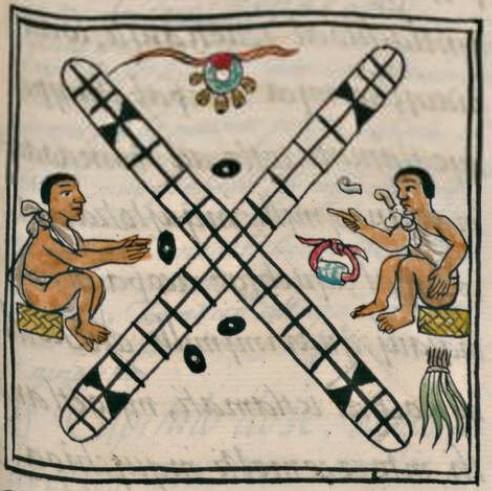Another snippet from our chat session from April 23rd. Cross-and-circle-games are known and played around the world, and throughout the ages: The idea of moving a token by random factors around a closed-circuit-course, hindering your opponents and trying to get to a personal end field is common, but its interpretation differs and may reflect cultural narratives.
Click on the images to get to the Wikipedia-descriptions if you’re interested.
“Yut” (A Korean version with domestic animals as tokens, and probably one of the oldest variants)
“Sorry” (Great Britain, a more tactical variant with playing cards)
“Pacheesi”, here depicted as “Chaupar” as a related variant
(India, a representation of the Samsara wheel of birth and rebirth)
“Patolli” (An ancient south american betting game for nobles)
“Zohn Ahl” (A game played by the north american Kiowa indians)
“Mensch ärgere dich nicht!” (A german version)
“University of Hamburg Game” (Wey-Han Tan in “KVV Medien & Bildung WS 2011/12”), an artistic intervention to support collaborative rather than competitive play among students, professors, administration and assisstants – otherwise everybody is bound to loose against the strict financial cuts.







